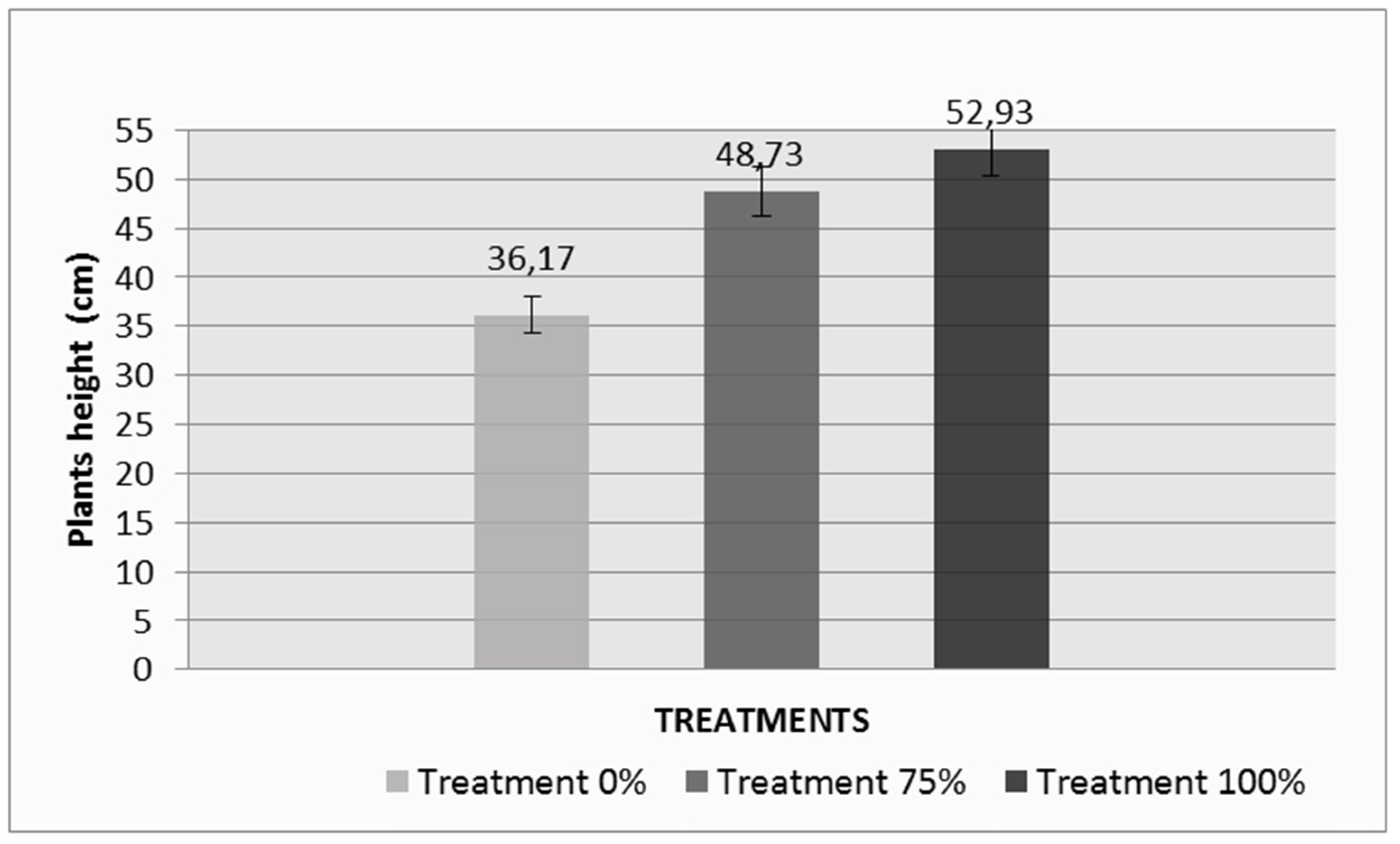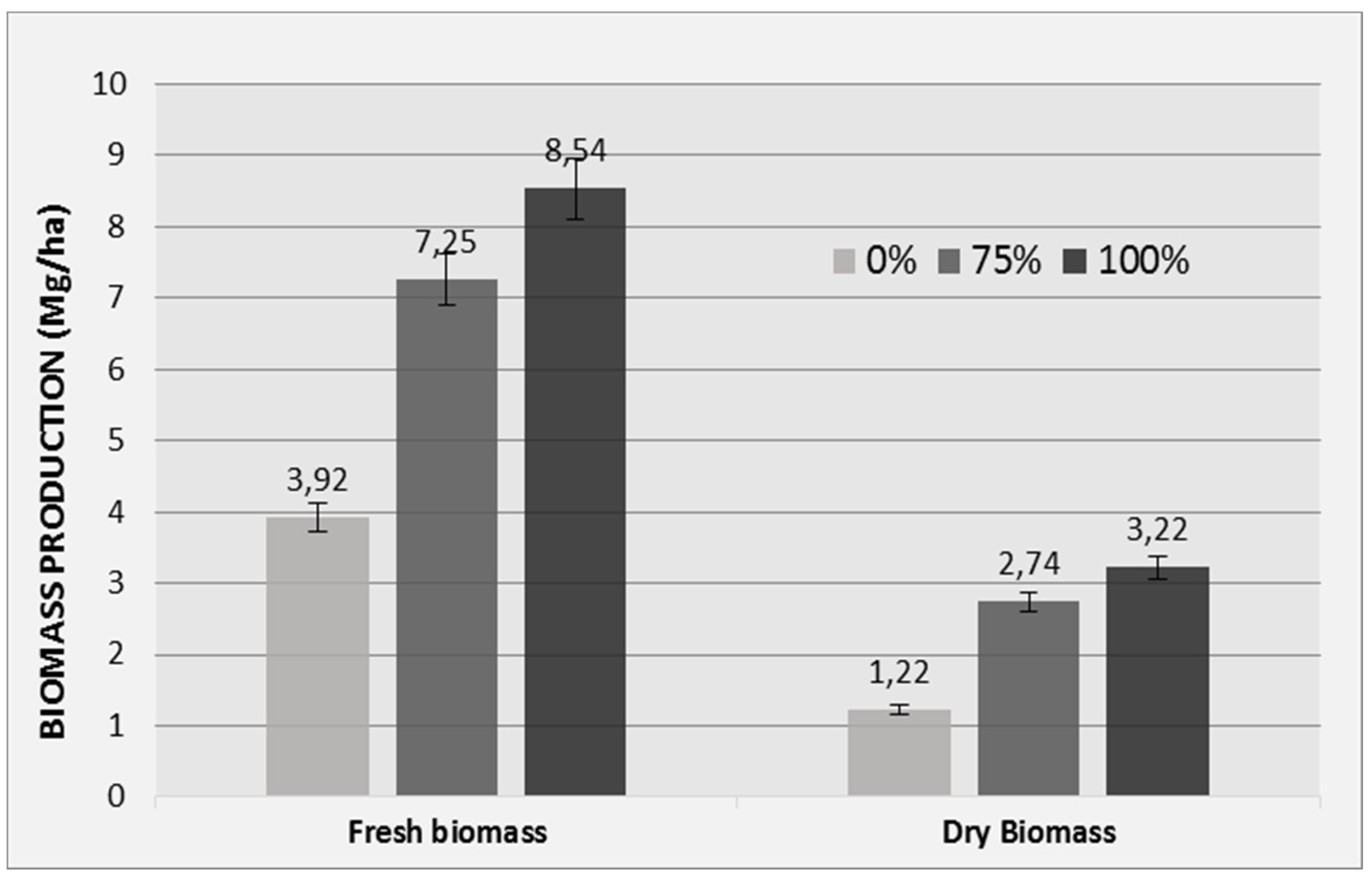1. Introduction
In countries with limited water resources, where the irrigation demands are higher than the 70% of the total water use, the demand for fresh water increases while the quality of this natural resource is downgraded [
1,
2].
A report of the European Union in 2012 about investigating measures to increase water saving claimed that improving water use efficiency could save 15% to 60% of the total water use [
3]. Other researches, in Greece, showed that the optimum irrigation scheduling in comparison with the limited irrigation improve the water use efficiency [
2].
Under the frame of an optimum management of the water demands, the irrigation programming is the key point. It is crucial to decide when and how much water do the farmers have to use. A number of different factors such as the development stage of the crops and their differences in sensitivity to the irrigation limitations as well as the different climatic conditions and the water availability determine the irrigation interval. However, the irrigation interval differs according to the irrigation method and under that point of view irrigation programming and irrigation methods are close related to each other [
4,
5].
The aromatic and pharmaceutical plants hold a high position in the culture of the most civilizations through the centuries. The “Mountain Tea”, species of the Greek flora, is part of a series of aromatic plants and herbs that are famous for their pharmaceutical properties as well as their byproducts and their essential oils [
6].
The species of
Sideritis raeseri are native ones in the Mediterranean and the surrounding area. Especially in Greece the plants can be found at a height more than 700 m [
7]. The Greeks used that species which is well known under the names of “Greek Tea” or “Mountain Tea”. The Greek producers, at their fields, try to simulate the physical development conditions of tea in order to not downgrade its quality. However, there are cultivated fields with tea in lower altitudes (i.e., 100 m). Tea is reproduced through offshoots and the new plants are planted directly to the new position. Suitable soils are the moderate mountainous limestone soils, the well-plowed and the well-drained ones. The harvesting usually takes place in July, when the plants are in full bloom. The dried product is packaged in bales, covered with sackcloth, and is stored (in this form) in well-ventilated warehouses until sale [
8].
The cultivation technique is improving up today, continually. Nevertheless, some basic cultivation issues such as herbicide, harvesting, fertilization and drying are still under discussion. The irrigation effect is under study, too [
9].
Taking those into consideration, the aim of this research is to study the effect of full and limited irrigation on the growing and productive characteristics of cultivated “Mountain Tea” (Sideritis raeseri) in low altitude areas.
2. Materials and Methods
The research took place at the experimental farm of the University of Thessaly in Velestino, Magnesia-Central Greece, during the year 2016, which was the second growing season. The Velestino area is placed at the west of the city of Volos with a latitude of 39°23′ N and a longitude of 22°45′ E. The altitude is 70 m above the sea level. The climate of the area is characterized as a typical continental Mediterranean, with hot and dry summers followed by humid and cool winters. The soil is characterized as a sandy clay loam with low organic matter and an alkaline pH with high amount of calcium. The porosity of the soil is well developed with small and moderate pores in size, thus with a good drainage [
10,
11].
The cultivation practices started on March 2015. The experimental field had no inclination and had an area of 0.05 hectares. A heavy cultivator was used at first followed by a light one some days later, in order to get the soil in the right condition to be planted. In each replication, six small furrows, four to five centimeters deep were dug manually. The furrows had an equal distance of 50 cm from each other. The tea plants were planted by hand with 50 cm distance apart from each other and 50 cm distance between the rows. The crop was planted at the 24 March 2015. According to the climatic conditions of the area and the physiology of the crop, the planting is characterized as late season.
The experiment was organized in a fully randomized complete block design with three treatments in three replications. Two of the treatments were irrigated: one treatment was irrigated with a supplied amount of water equal to the 75% (limited) of the daily water needs, while the other one was fully irrigated (100% of the daily water needs). The third treatment was rainfed (no irrigation–0%).
No fertilization had followed the planting. At the 21 April 2015 the irrigation system was placed. Surface drip irrigation was used to irrigate the experimental plots. Drip irrigation laterals had an inline emitter spacing of 50 cm and a water flow of 4 L/h. The crop water needs were calculated according to the daily calculated evapotranspiration (ETo) using the FAO-56 Penman-Monteith method [
12,
13]. Treatment 75% received 116 mm of water via irrigation while treatment 100% received 155 mm.
Measurements were related to the plants height, fresh and dry biomass production. The plant height is a general plant characteristic through which the plant growth rate can be measured. Taking that into consideration a sample of 10 plants was selected randomly, in each replication, for the height to be measured. The mean plant height of each treatment was the mean plant height of the 10 plants from each replication. The results were analyzed statistically with the statistical package SPSS v.18. using ANOVA (a = 0.05) [
14].
The harvest took place at the 19 May 2016 and the harvested plants were weighted in a high accuracy scale, in order to estimate the fresh biomass production. Those plants were then baled and placed in a closed, shady greenhouse with open windows for 10 days so as to dry physically. After the period of 10 days the dried plants were weighted again in a high accuracy scale in order to estimate the dry biomass production.
3. Results and Discussion
3.1. Weather Data
The mean air temperature and precipitation (10 days) during the cultivation period of 2016, as well as the mean values of the climatic parameters of the last 25 years, are presented in
Figure 1.
The precipitation of the year 2016 (195 mm) had no significant differences with the mean precipitation of the last 25 years (196 mm). It is obvious that during the second 10 days of March the precipitation was almost four times above the average (25 years). The opposite observation was done during the second 10 days of April, June and July where the precipitation was zero in 2016.
The mean air temperature values (10 days) were more or less the same as the mean temperature values of the last 25 years. During the first and second 10 days of April a higher temperature than the average was observed.
3.2. Plant Height
The plant height measurements in the three treatments took place in the 19 May 2016, when the plants were harvested.
As shown in
Figure 2, the mean plant height of the 0% treatment (rainfed) was equal to 36.17 cm. The plant height in the 75% treatment was 48.73 cm, while in the 100% treatment was 52.93 cm. The statistical analysis showed that between the treatments 75% and 100% there were no significant differences (
P > 0.05). Between the treatment 0% and the other two treatments (75% and 100%), statistically significant differences were found.
3.3. Fresh and Dry Biomass Production
Fresh and dry biomass production of the crop is shown below in
Figure 3.
The measurements of the fresh biomass were carried out the same day as the plant height measurements. The dry biomass measurements were carried out 10 days after harvest. As it can be seen in
Figure 3, the biomass production in the 100% treatment was higher compared to other research studies [
15], for the second cultivation period.
The 0% treatment had produced a fresh biomass of 3.92 Mg/ha, while the treatments 75% and 100% had a fresh biomass yield of 7.25 Mg/ha and 8.54 Mg/ha, respectively. The difference of the fresh biomass between the treatments 75% and 100% is statistically significant different. The treatment 100% had produced about 17% more fresh biomass yield than the treatment 75%. Additionally, statistically significant differences were found between the 0% treatment and the other two treatments (75% and 100%). Treatments 75% and 100% produced about 84% and 117% more fresh biomass than the 0% treatment, respectively.
Regarding the total dry biomass production, treatment 0% produced 1.22 Mg/ha, while the treatments 75% and 100% produced 2.74 Mg/ha and 3.22 Mg/ha of dry biomass, respectively. No statistically significant differences were found on the dry biomass production between the 75% and 100% treatments (P > 0.05), but statistically significant differences were found between the 0% treatment and the other two treatments (75% and 100%). Treatments 75% and 100% produced about 124% and 163% more fresh biomass than the 0% treatment, respectively.
4. Conclusions
The plant height of the “mountain tea” was found to be the same whether the crop was irrigated with the 75% or the 100% of the daily water needs. When the crop was not irrigated (rainfed treatment) the height of the plants was almost 40% smaller than the irrigated ones.
Regarding the biomass production, the 100% treatment produced about 17% higher fresh biomass yield, compared to the 75% treatment.
As for the dry biomass production, the treatments that were irrigated (75% and 100%) produced about the same dry biomass yield (no statistically significant differences were found). On the contrary, when the crop was not irrigated (rainfed treatment) the dry biomass of the plants was about 60% smaller than the irrigated ones.
Based on the above, the “Mountain Tea” (Sideritis raeseri) can be cultivated in low altitude areas, provided that irrigation will be used no matter of the planting season. Limited irrigation, compared to the full one, can save an important amount of irrigation water while having the same results regarding the crop’s characteristics.






